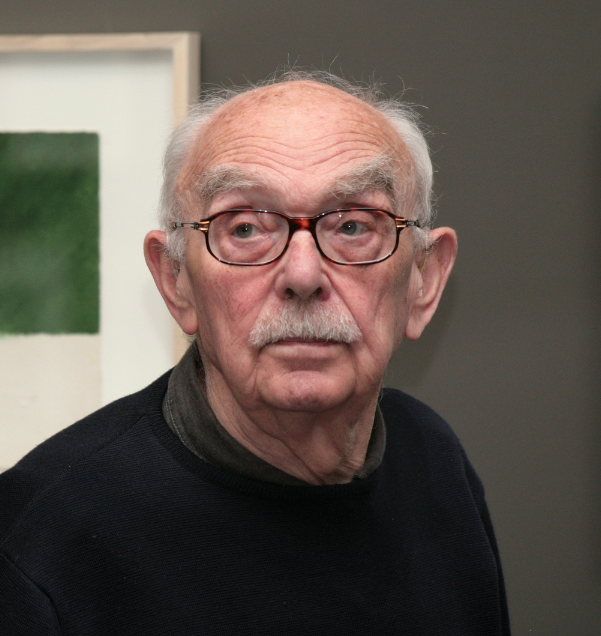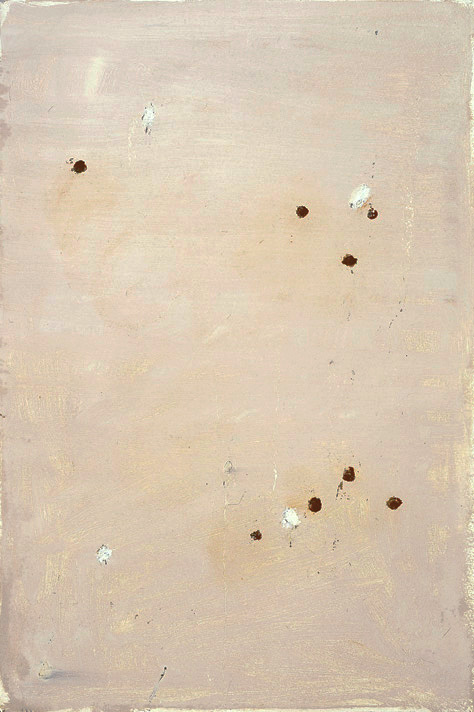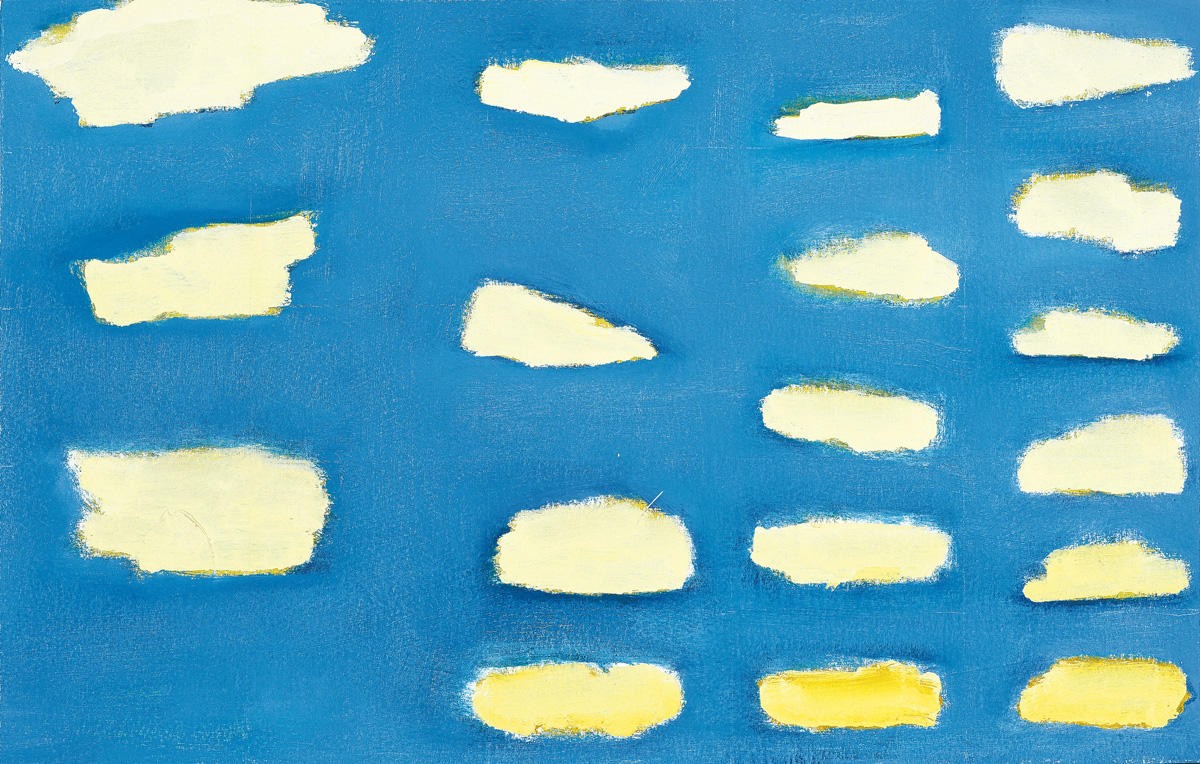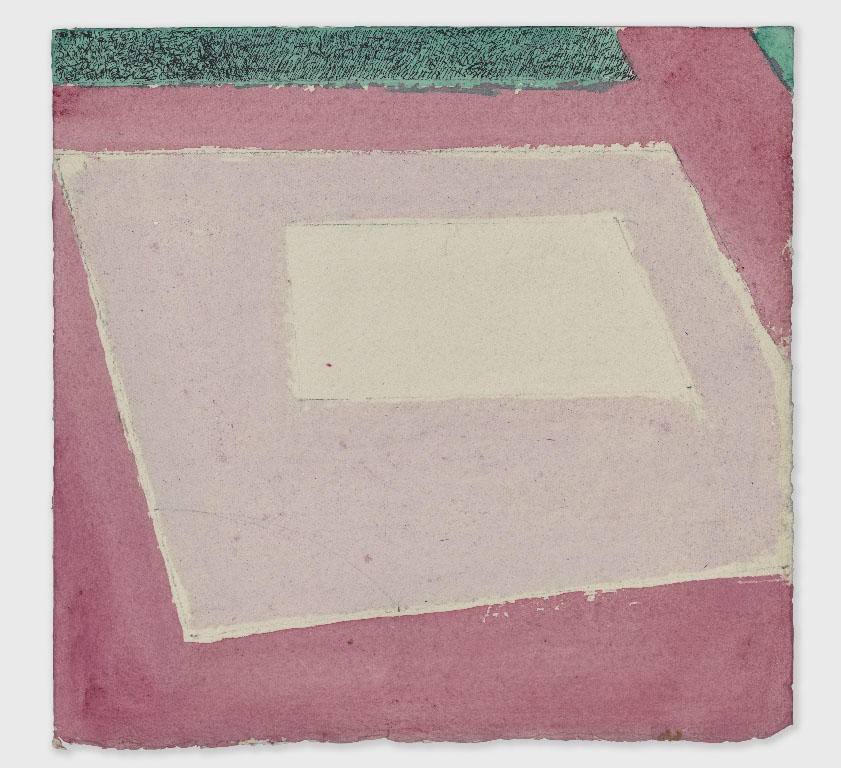Raoul De Keyser (1930) is one of the most subtle abstract painters of his generation. His oeuvre is poetic, vulnerable and refined at the same time.
After the New Vision period, he has been searching for the right way to turn identifiable subjects from everyday life into abstract colour fields and lines ever since the 1960s and 1970s. His extreme abstractions, however, are not cold geometric forms in hard colours, but poetically painted illusions as the frozen residue of a tangible reality.
Because the artist often starts out from personal objects or memories, every work that he paints is a quest for the right expression of the right image. That is why De Keyser’s paintings are never finished; it is a process that is built up layer by layer, leaving the evidence clearly visible on the edge of the canvas. Because the abstraction of an object or memory can assume different forms, motifs and colours, the search for perfection is often continued in a successive work, resulting in series with recognisable patterns. This process of painting over and repainting makes the oeuvre of De Keyser an exciting labyrinth of colour, form and feeling. The significance of his work lies less in the recollection of a particular reality than in the search for its absolute representation.
The screenprint Element is exemplary of the oeuvre of De Keyser in this respect. The combination of colour, composition and repetition results each time in a picture that is in perfect harmony with itself.
That the artist also attaches great importance to the freshness of his graphic oeuvre can be seen from the fact that the screenprint Element has been heightened with gouache. The four white dots, conspicuously kept out of the centre of the picture, were added with a few simple strokes of the brush to each copy.
Element
Edition Sold
Screenprint on Fabriano 300 g
Size sheet: 76 × 56 cm
Size image: 56 × 37.5 cm
Printed by MB Graphics, Landegem
Edition of 60
Published in 2007

Raoul De Keyser (1930-2012) is one of the most subtle abstract painters of his generation. His oeuvre is poetic, vulnerable and refined at the same time. After the New Vision period, he has been searching for the right way to turn identifiable subjects from everyday life into abstract colour fields and lines ever since the 1960s and 1970s.
other prints by this artist

Thank you for your interest in "Element" by Raoul De Keyser. We will get in touch with you shortly.


